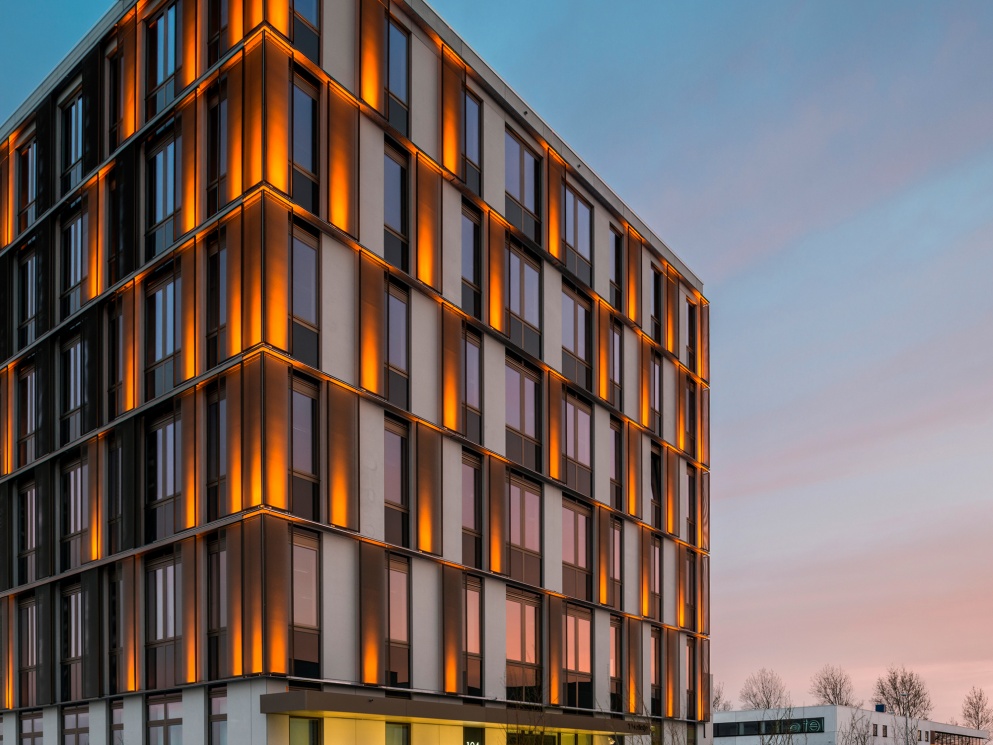What Are The Architectural Elements That Enhance Noise Reduction In Buildings?

Are you tired of hearing nothing but noise whenever you're inside your house or building? Noise is a common problem that many people face. Fortunately, there are methods of keeping the noise levels down through architectural acoustic design. Here are some ways you can control the noise in your building:
Insulation
One of the most important things to consider when it comes to reducing noise is insulation. Insulation is meant to keep the temperature of your building regulated, but it also serves as a sound barrier. The thicker your insulation, the more noise it can keep out. Adding insulation to walls, ceilings, and even floors can make a big difference.
Wall Panels
Wall panels can improve the acoustics of any room. Panels are a type of finish that can be added to walls to give them a more aesthetically pleasing look, but they also absorb sound. Adding panels to high traffic areas or where you spend the most time can make a huge difference.
Ceiling Tiles
Similar to wall panels, ceiling tiles can improve the acoustics of any room. Ceiling tiles absorb sound, specifically when there are a lot of hard surfaces in the room that can reflect sound waves. Installing ceiling tiles in spaces like conference rooms can improve the sound quality and making it easier to hear and communicate with others.
Window Treatments
Most windows don't offer much sound insulation, however by adding window treatments like shades or curtains, you can keep most of the noise out. Even placing a thick rug on the floor underneath the window can absorb sound. Blocking out sound that comes in through windows can be especially helpful in noisy, urban areas.
Flooring
Many people don’t realize that flooring can have an impact on noise levels throughout a building. Hard surfaces like tile and hardwood floors can be noisy when walked on or objects are dropped. Consider adding thick carpets or rugs to help absorb sound and reduce noise.
Doors
Doors are one of the main areas of a room where sound can travel through. Heavy, solid doors are the best for reducing noise transmission. Additionally, a door sweep can create a seal between the door and the floor, blocking any gaps that sounds may sneak through.
Room Layout
The layout of a room can also affect acoustics. A room with irregular angles and shapes can reflect sound in different ways that can increase noise levels. A room that is designed with more horizontal and vertical surfaces, like a rectangular space, can absorb sound and reduce echo.
Sound Masking
Sound masking is a process where ambient white noise is added to a room to cancel out other noises. White noise can also reduce stress levels and increase productivity, making it a win-win for all.
FAQ
What is architectural acoustic design?
Architectural acoustic design is the process of designing buildings to control sound transmission. It involves analyzing the environment, creating acoustical models, and selecting the appropriate materials to keep noise out.
Why is noise control important in buildings?
Noise control is important in buildings because it affects our daily lives. People spend a lot of time indoors, and excessive noise levels can increase stress, affect productivity, and even cause hearing damage. By employing noise control measures, you can create a more peaceful environment that is healthy for you and those around you.
Can noise control be added to an existing building?
Yes, noise control can be added to an existing building. Many of the methods mentioned, including insulation, wall panels, and ceiling tiles, can be retrofitted to an existing building.
What is the cost of noise control measures?
The cost of noise control measures varies depending on the specific method and the size of the project. Adding insulation or window treatments, for example, can be relatively inexpensive, while installing a sound masking system can be more costly. However, the benefits of reducing noise levels can outweigh the cost of adding these measures.
Can noise control measures affect the aesthetics of a space?
On the contrary, many noise control measures can actually look great. Wall panels and ceiling tiles can be designed to match the decor of a room, making them an attractive addition to any space.
Do noise control measures only reduce noise from outside sources?
Noise control measures can address both outside and inside noise sources. Adding insulation can reduce sound from outside sources, while methods like sound masking can address noise from inside a space.
Is it necessary to hire a professional for noise control measures?
You can do some of the noise control measures yourself, such as adding window treatments or rugs. However, for larger projects, like installing a sound masking system, it may be best to hire a professional with expertise in acoustical design.
By employing several noise control methods like insulation, wall panels, ceiling tiles, window treatments, flooring, and door rules, you can create a more peaceful and productive environment. In the end, reducing noise levels will benefit not only your physical health but your mental health as well. Feel free to contact us to inquire about our noise control services.




Post a Comment for "What Are The Architectural Elements That Enhance Noise Reduction In Buildings?"